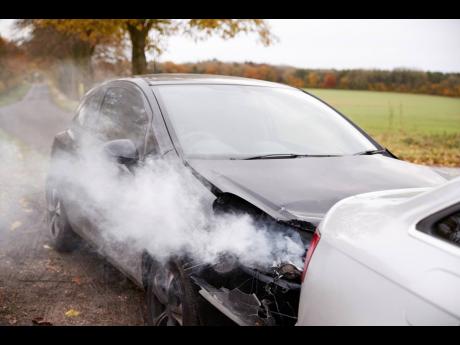Speed kills … cut and control your speed
There is a sign that is quite noticeable on the roadways, and it reads, “Speed kills, kill your speed”. “We must think about it logically: more speed, greater impact; less speed, less impact,” stated Lurkent Hanson, a Gryphon-trained defensive driver instructor. According to Hanson, increase speed slowly, keep a steady speed on open roads, and slow down smoothly.
He explained that pressing the gas pedal slowly and starting up slowly gives other drivers and pedestrians the opportunity to observe what you are doing.
Finding a comfortable speed should be the first duty of the driver when he begins his road trip. The speed should fall somewhere near the legal limit. “Stay within the speed limit. The mental strain and distraction on the driver who is travelling above the legal speed can greatly increase the danger of an accident,” says Kanute Haire, director of road safety in the Ministry of Transport.
How does a driver know when he has reached the speed he wants?
• Glance quickly at the speedometer.
• Try to keep a steady, even pressure on the gas.
• With practice, you will be able to judge the correct pressure for any speed.
• When you keep your speed steady, you help other drivers adjust their speed to yours.
The point is, speed is comparative, and what might be thought a fast pace on a clear, straight, open road might well be a dangerous speed in a congested built-up area or in narrow, winding lanes. According to the Defensive Driver Workbook of the Advanced Driver Training Centre, safe speeds also depend upon the degree of skill and concentration achieved by the driver and the mechanical condition of the driver.
It is, therefore, imperative that as motorists we consider these factors:
Factor 1: The condition of the motor vehicle, and most important, the brakes. In driving on the open road, brake usage falls into three general categories:
A. Light braking for corners
B. Braking for stops at intersections and stop lights
C. Emergency braking, where reducing speed in the shortest possible distance is crucial
Factor 2: The reaction time – This refers to the time required by the brain to register the need to take action and to convey its command to the hand or foot. “It varies with an individual’s physical capabilities, state of health and mind, and consequently, the degree of concentration,” advised Dr Andrew Burton. Any momentary distraction might easily double or triple this time and distance.
Factor 3: The state of the weather – Visibility, high winds and rain all become crucial factors when speeding.
Factor 4: The state of the road – Structure, texture, and surface condition
Factor 5: Traffic density
A defensive driver will automatically take these factors into consideration whether day or night and adjust his speed as the situation requires. However, there is one general overall injunction that sums it up: Never drive at a speed that will prevent you from stopping well within your range of vision!



